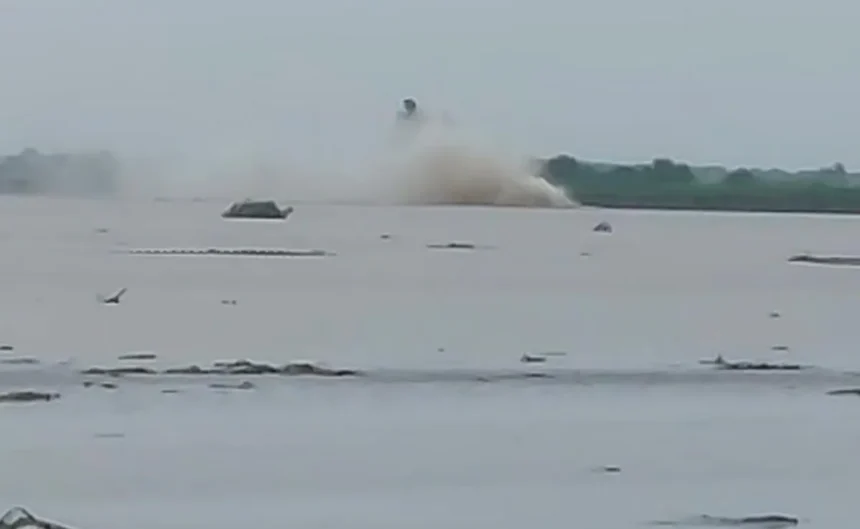In the early hours of Wednesday, a gas leak was detected on a pipeline running beneath the flooded Yamuna River in the Baghpat district of Uttar Pradesh, India. The leak caused a burst of water that created a remarkable fountain visible from a distance, sparking both awe and concern among local residents.
The pipeline was owned and operated by Indian Oil Corp (IOC), and it ran between Dadri and Panipat. Upon discovering the leak, the company promptly took action by shutting off the gas supplies at both ends to prevent any further escalation. Fortunately, no injuries were reported, and the situation was brought under control swiftly.
The incident occurred amid heavy rains in northern India, which led to a continuous rise in the water level of the Yamuna River. At approximately 4:37 AM on that fateful day, the leak was suspected in the section of the pipeline passing through the riverbed, specifically in the village of Jagos in Baghpat district.
A spokesperson from IOC issued a statement acknowledging the situation and their response to it. The company attributed the suspected leak to the adverse weather conditions and the subsequent increase in water level, which likely exerted pressure on the pipeline. Promptly recognizing the potential hazards, they decided to shut down the gas supply to prevent any untoward incidents.
The sight of the water fountain caused by the gas leak attracted the attention of locals and authorities alike. It was a rare phenomenon, albeit an alarming one, as gas leaks can be highly dangerous. However, due to the quick actions taken by IOC, disaster was averted, and the area was secured for investigation and repairs.
The Yamuna River, like many others in the region, was swollen from the heavy rainfall, which had been persistent for several days. Floods had become a common occurrence in the area during the monsoon season, and the river often posed challenges to infrastructure, including pipelines running through its bed.
In response to the incident, the district authorities and environmental agencies were alerted to assess any potential ecological impacts and the safety of the local communities. An immediate concern was the possibility of gas seeping into the water, which could contaminate the river and affect both aquatic life and water quality.
IOC, being a responsible corporate entity, assured the public that they would conduct a thorough investigation into the cause of the gas leak and the extent of any environmental implications. Additionally, they promised to implement necessary measures to prevent similar incidents from occurring in the future.
As the incident gained media attention, experts and environmentalists emphasized the importance of stringent safety measures for critical infrastructure passing through ecologically sensitive areas. They called for better monitoring and inspection protocols to detect and address potential vulnerabilities before accidents like this gas leak could happen.
The local community expressed relief that no injuries were reported and praised the swift response by IOC in handling the situation. However, they also voiced concerns about the risks posed by pipelines running beneath the riverbed, especially during the monsoon season when the water level rises significantly.
The gas leak incident in the Yamuna Riverbed near Baghpat district served as a wake-up call for the need to prioritize safety and environmental protection in critical infrastructure projects. The impressive water fountain resulting from the leak may have drawn attention, but it also underscored the potential dangers posed by such occurrences. With careful investigation, remediation, and improved safety measures, stakeholders hoped to prevent similar incidents and ensure the well-being of both the environment and the local communities in the future.




